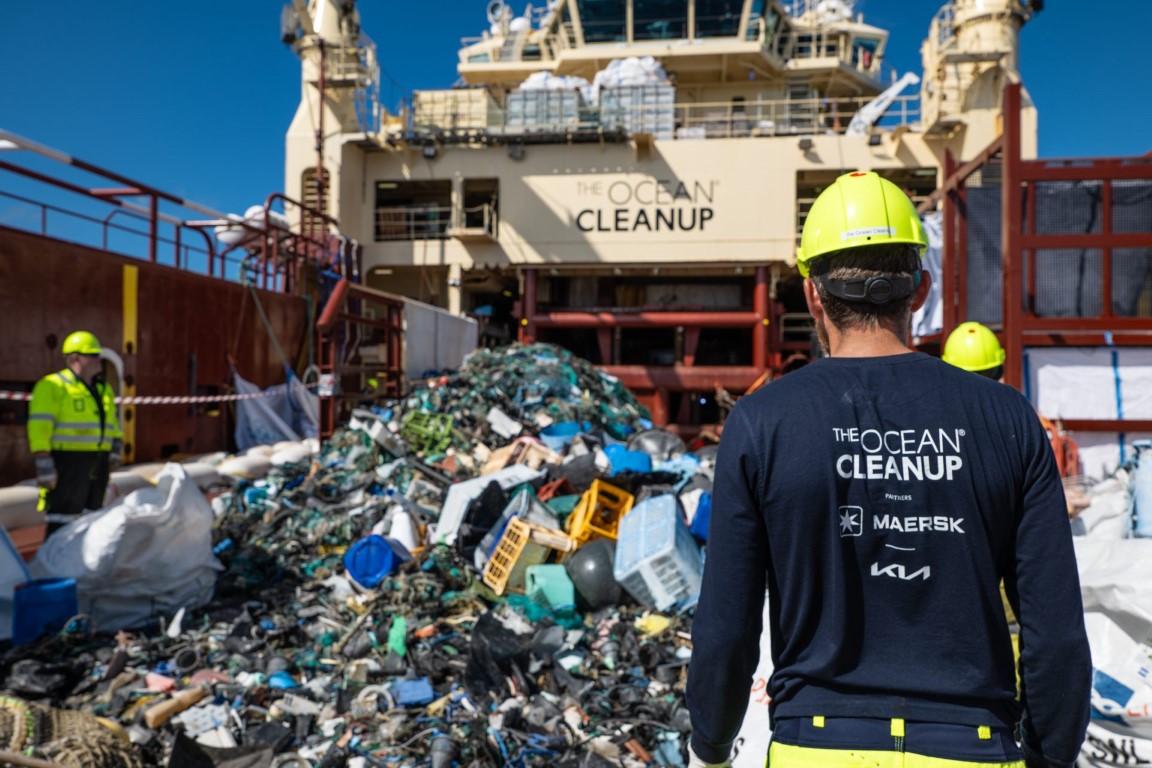The Ocean Cleanup is a non-profit organization committed to developing innovative technologies to remove plastic from the oceans and rivers. Founded in 2013 by young inventor Boyan Slat, the initiative quickly gained global attention for its ambitious mission and remarkable achievements.

Credits: theoceancleanup.com
The Origins
Boyan Slat’s Idea During a scuba expedition at the age of 16, Boyan Slat noticed a substantial amount of plastic in the sea. This experience motivated him to devise a system to clean up the oceans. He presented the idea at a TEDx conference in 2012, where it garnered significant support and attention.
The Objectives Reducing Ocean Pollution
The Ocean Cleanup aims to reduce 90% of floating plastic in the oceans by 2040. This ambitious objective is pursued through two primary strategies: the removal of existing plastic and intercepting plastic waste in rivers before it reaches the sea.
Focus on Rivers The majority of plastic that ends up in the oceans comes from rivers. The organization has developed the Interceptor, a device designed to stop plastic waste in the world’s most polluted rivers. The goal is to target 1000 of the most polluting rivers, which are responsible for 80% of global river pollution.
Projects and Technologies
System 001/B and System 002 These systems have been developed to capture and collect plastic from the Great Pacific Garbage Patch, one of the largest concentrations of ocean waste. With continuous improvements, these systems have proven to be effective in collecting large amounts of plastic.
Interceptors in Rivers Interceptors have been deployed in various rivers across the globe, including Indonesia, Malaysia, Vietnam, and the Dominican Republic. These autonomous devices are capable of collecting large quantities of plastic waste, preventing it from entering the oceans.
Achievements
Milestones Reached
In 2020, The Ocean Cleanup surpassed the milestone of removing 100,000 kg of plastic from the Great Pacific Garbage Patch. Additionally, the interceptors have collected millions of kg of plastic from rivers, demonstrating the effectiveness of their integrated approach to cleaning both oceans and rivers.
Interceptor 006: An Effective Solution Against River Pollution
Installed in the Río Ozama river in the Dominican Republic, this autonomous device marks a significant milestone in the mission to intercept plastic waste before it reaches the ocean. Interceptor 006 is designed to operate autonomously, using solar energy to power its collection mechanisms. Its structure features a barrier that directs waste towards a central conveyor, which lifts and deposits it into onboard containers.
Collection Capacity
Capable of collecting up to 50,000 kg of plastic per day, Interceptor 006 plays a pivotal role in preventing marine pollution. Its advanced technology allows it to operate 24 hours a day, 7 days a week, without disrupting river flow or navigation.
Since its installation, Interceptor 006 has collected thousands of kilograms of plastic, demonstrating the effectiveness of The Ocean Cleanup project. This success has encouraged further implementations in other critical rivers worldwide.
Collaborations and Partnerships
The Ocean Cleanup has collaborated with various global organizations and companies, including Maersk and Coca-Cola, to expand its impact. These partnerships are crucial for scaling its technologies and achieving set goals.
The Ocean Cleanup represents one of the most ambitious and innovative initiatives to address the global issue of plastic pollution. Through its scientific and technological approach, the organization continues to make significant progress towards creating cleaner and more sustainable oceans. To learn more and support the cause, visit The Ocean Cleanup.


